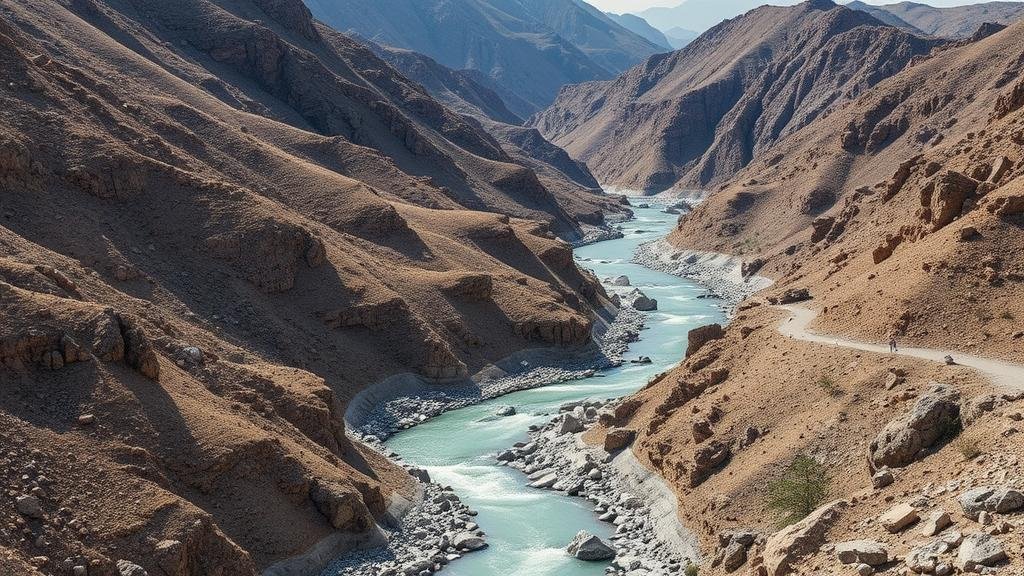Tracing ancient riverbeds to locate hidden deposits of sapphires in remote mountainous regions.
Tracing Ancient Riverbeds to Locate Hidden Deposits of Sapphires in Remote Mountainous Regions
For rockhounds and mineral collectors, the thrill of discovery is exhilarating, especially when it involves precious stones like sapphires. Tracing ancient riverbeds can reveal hidden deposits of sapphires in remote mountainous regions, adding an adventurous aspect to collecting. This article will provide detailed insights into how geological processes shape the landscape, leading to potential sapphire sites, and how collectors can optimize their hunting approaches.
The Geology of Sapphire Formation
Sapphires are a variety of corundum, which is an aluminum oxide mineral. r compelling colors arise from trace elements, such as iron and titanium. Understanding where to find sapphires often correlates directly with the geological history of the area.
In mountainous regions, sapphires are typically found in river gravels, which are remnants of ancient river systems. Geological surveys indicate that many sapphire deposits originate from metamorphic rocks, particularly in regions where the Earths crust has undergone significant pressure and heat.
Tracing Ancient Riverbeds: The Process
Identifying ancient riverbeds requires a combination of geological knowledge and strategic exploration. following steps provide a basic framework:
- Research Geological Maps: Seek geological maps of the region. These maps provide details about the location of metamorphic rocks and their transformations over time.
- Understand Erosion Patterns: Study erosion patterns, as ancient river systems may have been filled with gravel deposits rich in minerals moved from upstream locations.
- Field Reconnaissance: Conduct field trips to remote mountainous areas, focusing on abandoned river terraces and flat gravels above current river levels.
Identifying Potential Sapphire Deposits
Once you locate a prospective ancient riverbed, identifying the presence of sapphires within the gravels becomes the next critical task. Factors to consider include:
- Soil Composition: Look for highly mineralized soils, typically containing iron, as these areas are often more favorable for sapphire accumulation.
- Texture and Color of Gravel: Sapphires often lie within layers of coarser gravels. In some cases, they may be glimpsed shining from within the stones.
- Presence of Other Gemstones: Areas yielding garnets or zircons often provide clues that other gemstones, including sapphires, may also be present.
Tools of the Trade
Equipping yourself with the right tools can significantly enhance the probability of discovery. Essential items include:
- Panning Tools: A gold pan is useful for sifting through river gravels and identifying potential sapphire specimens.
- Hand Tools: A pick and small shovel will help in digging deeper into gravel layers.
- Field Identification Guide: A guidebook on sapphires and other gemstones can aid in the identification of finds.
Real-World Applications
Many mineral collectors have successfully traced ancient riverbeds, leading to significant finds. For example, in regions such as Montana, the movement of glacial waters has unearthed vast concentrations of sapphire deposits. Local collectors often share their experiences on forums and through social media platforms, highlighting which ancient riverbed sites have yielded optimal results.
Potential Challenges and Considerations
While the prospect of finding sapphires can be exciting, there are several challenges to keep in mind:
- Remote Locations: Accessing remote mountainous regions may require special gear or permits, particularly in protected areas.
- Regulations: Ensure you are aware of any legal restrictions regarding mineral collection in the area.
Actionable Takeaways
For aspiring rockhounds and mineral collectors, tracing ancient riverbeds presents a unique opportunity to discover hidden sapphire deposits. To maximize your success:
- Conduct thorough geological research before heading out to a new location.
- Always carry the right tools and resources for identifying gem-quality stones.
- Network with local collectors and join online communities to learn from their experiences.
By understanding the geological processes at play and meticulously searching ancient riverbeds, collectors can unlock the secrets of the Earth’s treasures and uncover the beauty of sapphires in remote landscapes.



